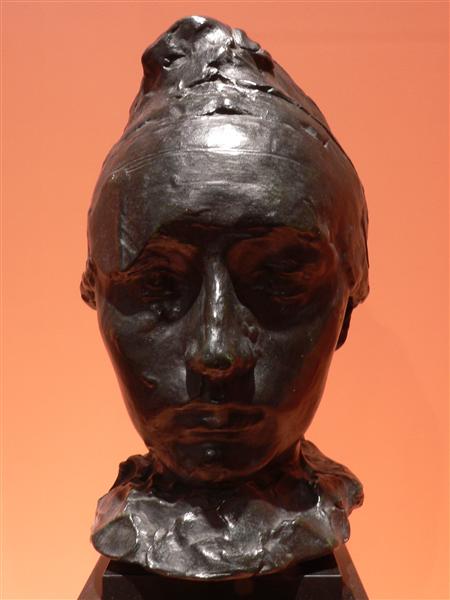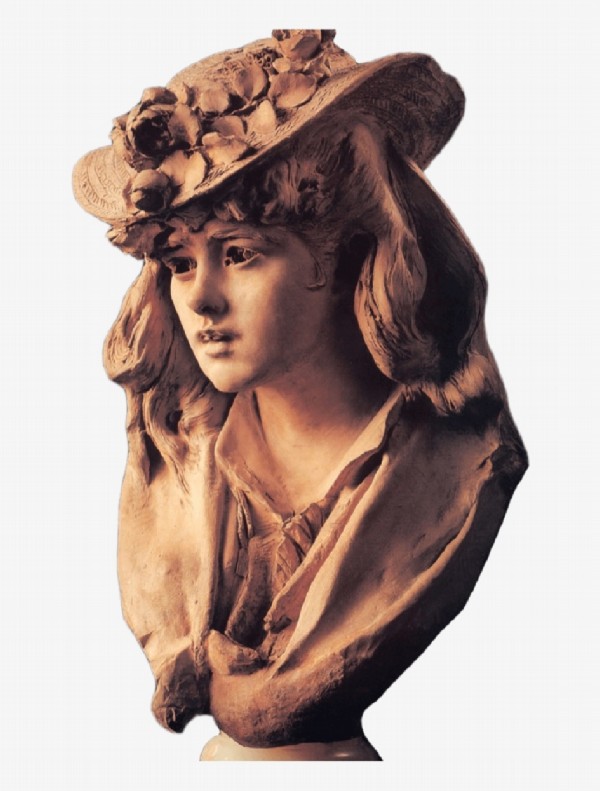Auguste Rodin sculptor who breathed living energy into stone

Auguste Rodin (born November 12, 1840 died November 17, 1917) is the brightest and most extraordinary representative of the Art Nouveau style, who worked at the turn of the 19th-20th centuries. The virtuoso French master Auguste Rodin was deservedly recognized as a bold innovator and founder of modern sculpture. His works were often criticized, customers refused them, they were dragged into high-profile scandals. But Rodin continued to create, as if breathing living energy and plasticity of the human body into the stone.

Biography of Auguste Rodin
Auguste Rodin is the second child in the family of an employee of the office of the Parisian prefecture. He was born on November 12, 1840, grew up and was educated with his older sister Marie. It was to her that Rodin owed his admission to art school: the boy was very fond of drawing. When Auguste was 14 years old, his father succumbed to his daughter’s requests and allowed his son to enter the capital’s Small School of Arts, where they trained creative artisans jewelers, decorators and artists.

Three times Auguste Rodin tried to get a higher art education, passing exams at the Paris School of Fine Arts, but all three times failed. So he went to work as a craftsman. First as an apprentice, then as a decorator and sculptor. At the same time, he took lessons from the famous master Antoine Barye (Antoine-Louis Barye), not leaving the dream of high art.
The death of his sister in 1863 unsettled Auguste for a while. He abandoned sculpture and turned to religion, becoming a novice in the community of Pierre Eymard (Pierre Julien Eymard), but the abbot persuaded the young man to return to his beloved work. Following the monk’s advice, Rodin plunged headlong into the craft. Most of the work of that time was done anonymously, but it is known that Auguste Rodin designed the facade of the Goblen theater and the foyer of Gaite. In the same years, he made a bronze bust of the abbot Eymar, which is still kept in the Rodin Museum (Musee Rodin).

And then changes took place in the life of the loving Rodin he met Rose Boeret.
The seamstress Beuret remained with Auguste until the end of her days, despite numerous love affairs (including with Camille Claudel) of the sculptor on the side. And she was one of the first models of the master, posing for his early busts “Mignon” and “Girl in a hat with flowers.”
After Brussels, where Auguste Rodin helped Albert-Ernest Carrier-Belleuse, he began to cooperate on an equal footing with Antoine-Joseph van Rasbourgh. The family’s income increased, which allowed the sculptor to travel to Italy to get acquainted with the art of the Renaissance. Passing through Reims, he fell in love with Gothic architecture forever and passionately.

Auguste Rodin brought the idea of the “Bronze Age” from Italy. The sitter was a strong Belgian soldier with beautiful and well-developed muscles. Art historians suggest that he was inspired to create the sculpture by the “Dying Slave” of the great Michelangelo. The work caused a scandal (critics did not believe in Rodin’s skill, suggesting that he presented to the public not a finished sculpture, but a cast from the body). And yet, the “Bronze Age”, also called “The Defeated”, brought recognition. Rodin increasingly exhibits his works at exhibitions, takes on complex and interesting orders, and takes part in competitions. And he always does it with special audacity and courage, experimenting with form and content.

He created when art was dominated by:
- realism;
- symbolism;
- impressionism;
- romanticism.
But he never considered himself one of the existing styles. An ordinary craftsman was reborn into a genius of sculpture, conveying through stone and bronze the whole palette of human emotions, energy and dynamics of movements. During his lifetime, he earned the recognition of the public, earned quite a decent fortune and bequeathed all his work to the state. In the last year of his life, he nevertheless married the faithful Rosa Boeret. She died less than a month after the marriage, and Rodin survived her by only six months. The sculptor died of pneumonia on November 17, 1917.

The most famous sculptures of Auguste Rodin
All sculptures by Auguste Rodin are filled with meaning and executed with extraordinary skill. The best works of the master include:
- “The Gates of Hell” is a sculptural composition made to order for the entrance to the museum, which was never opened. Some of the models of this portal have become independent sculptures, among them The Thinker and The Kiss.
- “The Man with the Broken Nose” (1865) is Rodin’s first work, which won the recognition of the general public.
- “Citizens of Calais” (1884-1888) a sculptural group dedicated to the civil feat of the townspeople in the Hundred Years War. Paid for by donations collected by local residents.
- “John the Baptist” (1878) received the 3rd prize at the Paris Salon in 1880. Created under the impression of the figure of a peasant sitter, whom the author associated with John, who baptized Jesus.













